Mountain Lions in Missouri
February 7th, 2017 by BTC Editor
What is one of the neatest things you’ve captured on your game cameras? For Darryl Esthay from Louisiana it was photos of a mountain lion on a piece of property he hunts in Missouri, a very rare sight for the Show-Me-State! Being from Missouri myself, I know how big of a deal it is to the residents here to learn that there are mountain lions in our state. I contacted Darryl to get the story behind the photos and to find out what is involved in reporting a mountain lion sighting in Missouri.
The Story
According to Darryl, he went to his hunting property in Oregon County, Missouri for his final deer hunt of the year on 1/02/2017. That afternoon, he pulled his SD cards on his Browning Strike Force Trail Cameras and found this series of mountain lion pictures on one of them. He then contacted the Missouri Department of Conservation (MDC) who sent their Mountain Lion Response Team to investigate the “possible” sighting, later officially confirming that this indeed is a mountain lion.


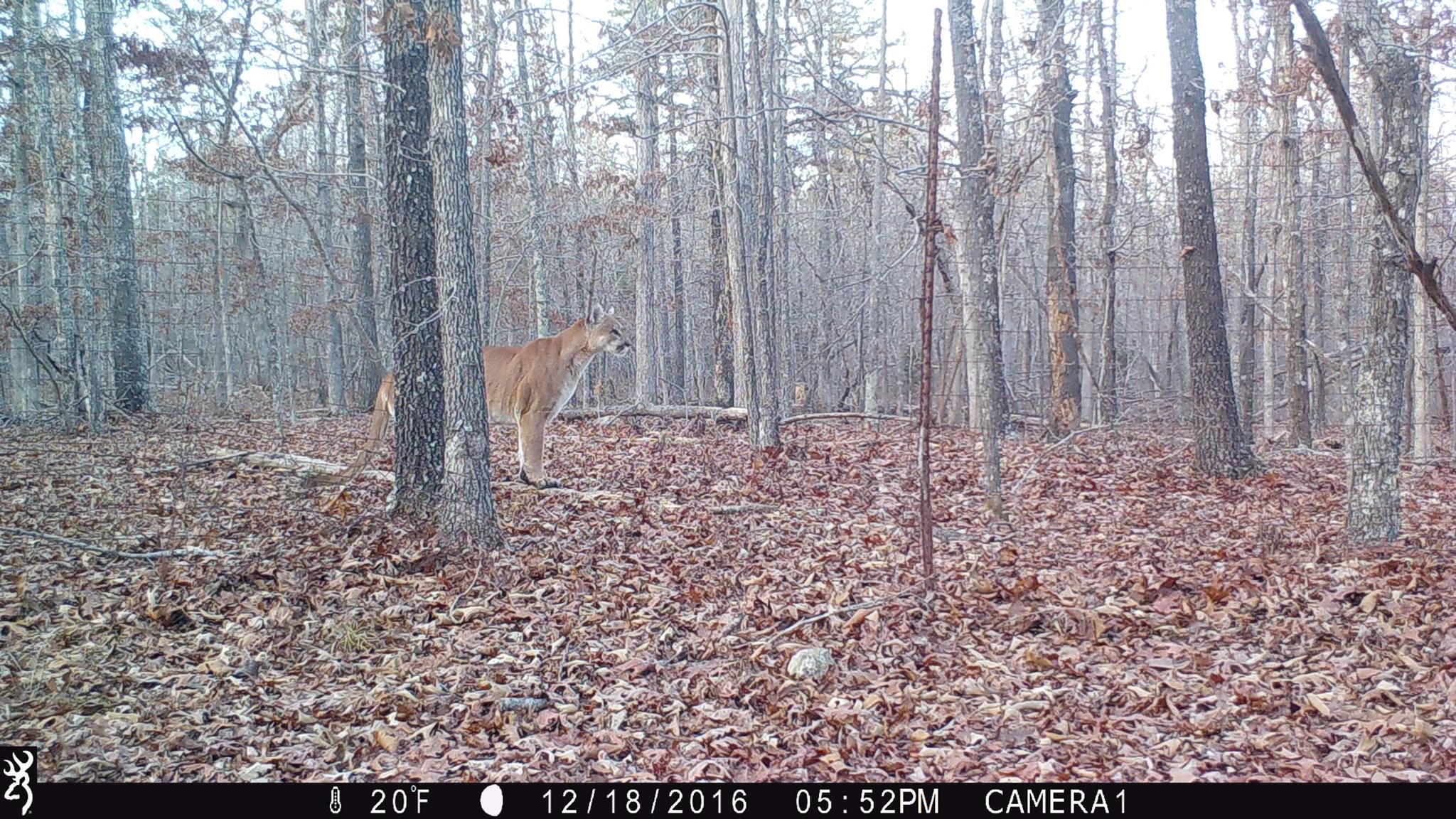
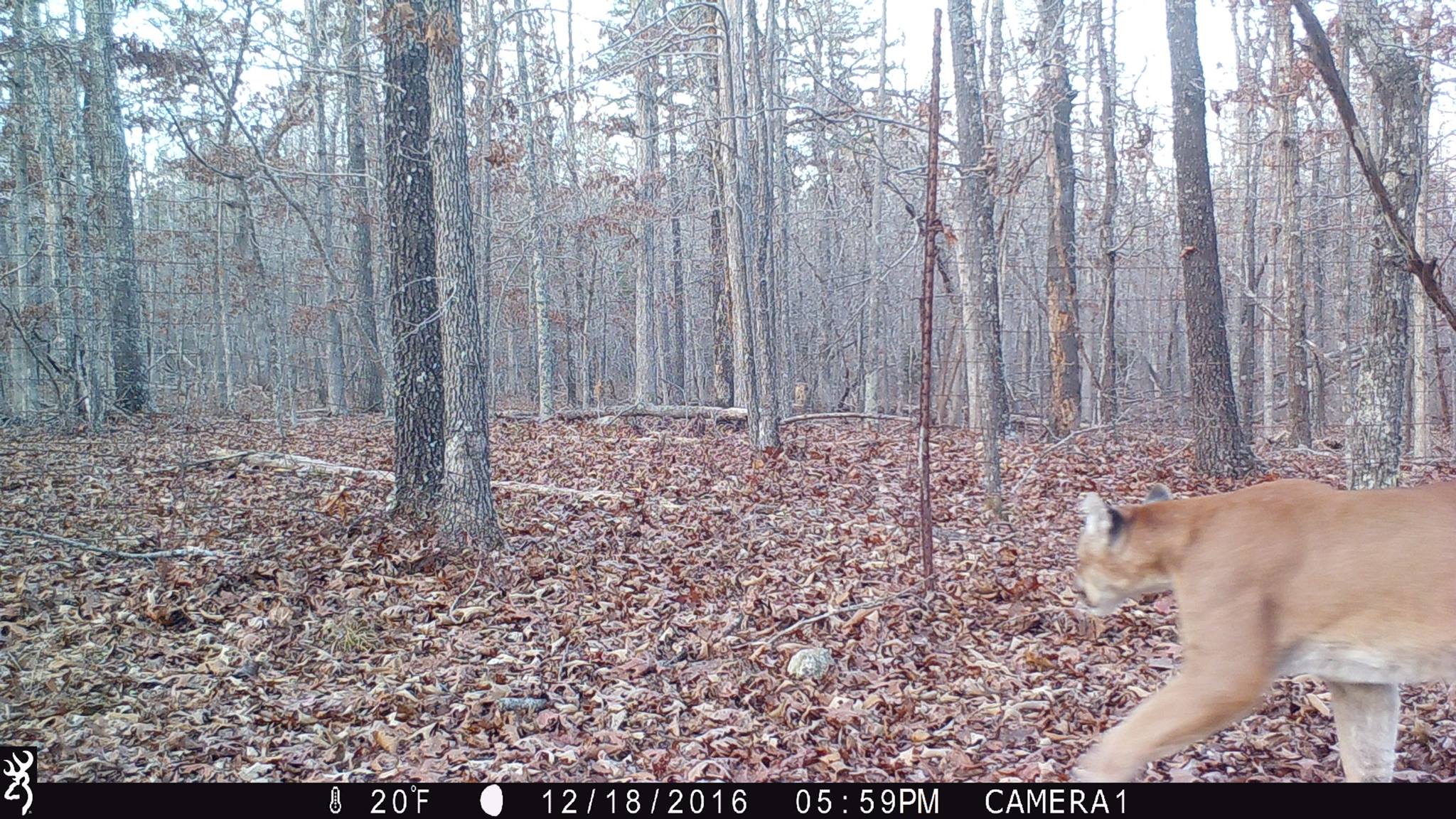
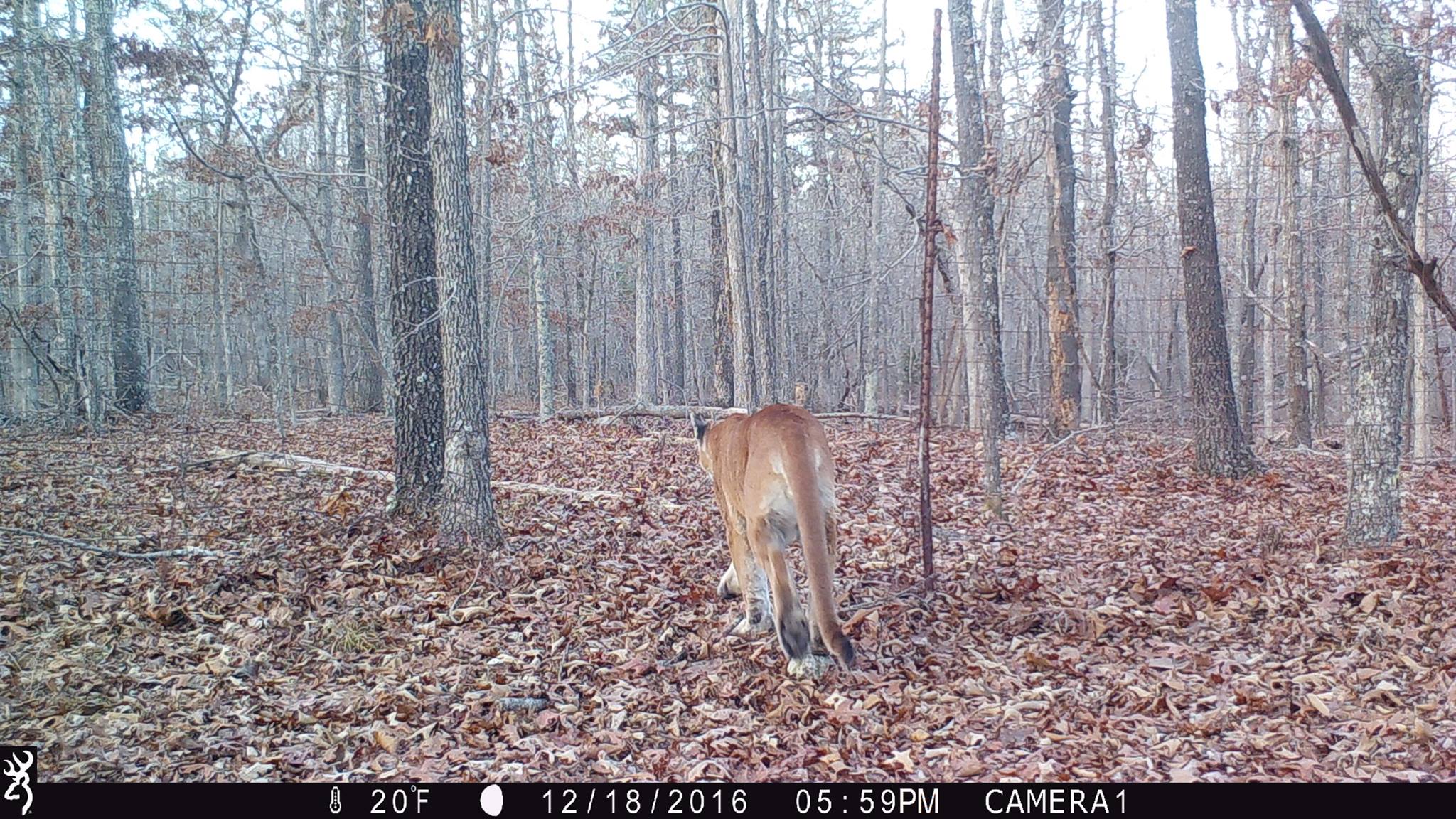
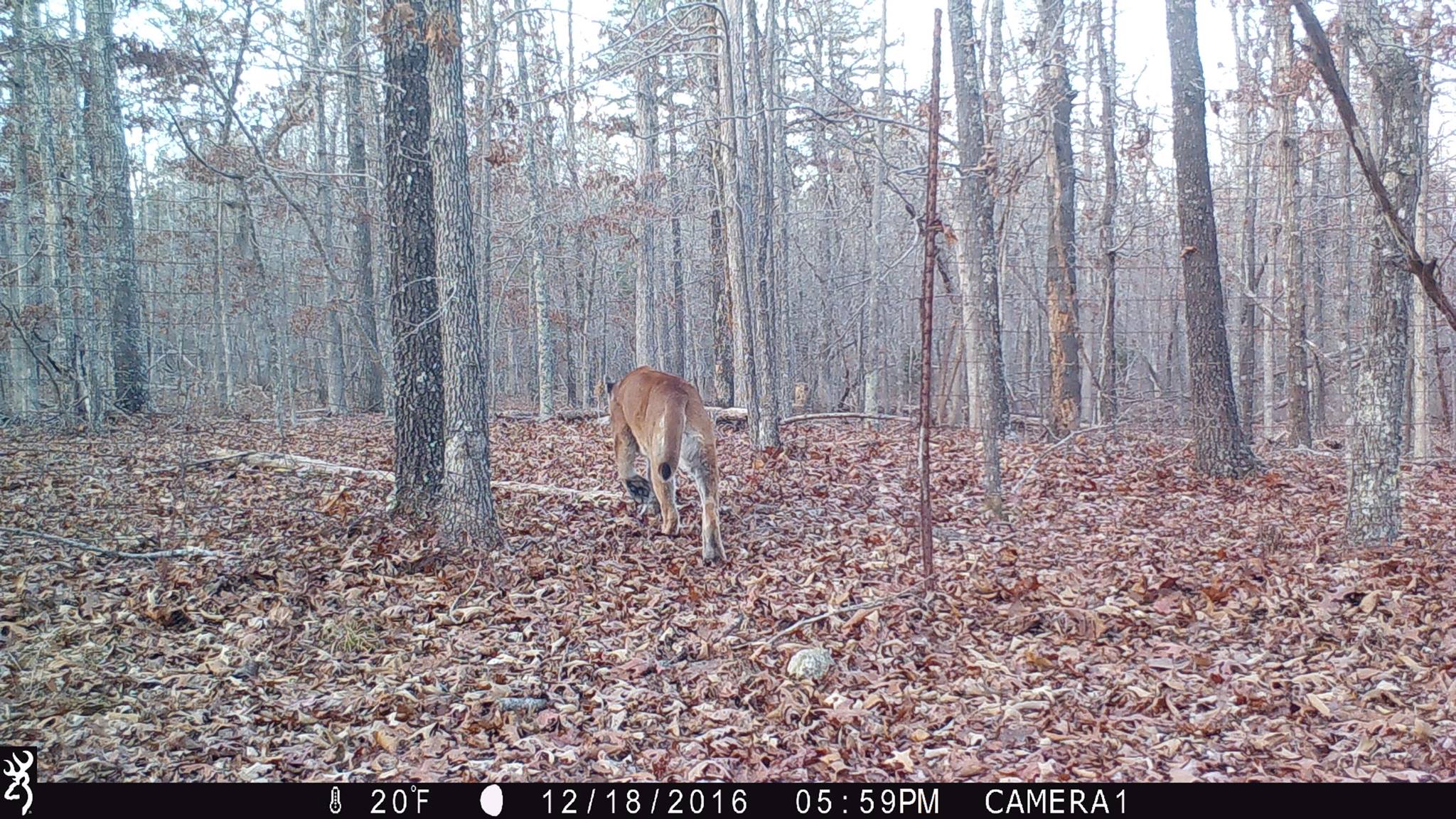
Darryl states that they were very thorough in gathering their evidence. They asked to see the original SD card that the mountain lion pictures were on, which Darryl presented to them. They saved the mountain lion photos, as well as the two photos before and the two photos after, to help support their evidence.
Next, the Mountain Lion Response Team asked to see the location that Darryl’s Browning Trail Camera was hung. They spotted the different landmarks that were in the photo: the fence, the rock & the log, and verified that it was the same location that the mountain lion pictures were taken. Darryl states that the “high fence” that is in the photos is actually an old fox pen from years ago that was there when he bought the property. He has cut 5-6 foot holes all along the fence to allow wildlife to pass through, as you can see in the photos.
After verifying the location was the same as in the photos, they then looked for mountain lion hair, scat and tracks in the area, but so far none were found. All of the gathered evidence was then presented to the entire Mountain Lion Response Team and was later officially confirmed as a mountain lion sighting in Missouri.
About a week later, Darryl also got a video of a gray fox, and what could possibly be another mountain lion in the bottom right-hand corner. The Mountain Lion Response Team looked at this video as well but they were not able to confirm that it was a mountain lion. They advised Darryl that once all the evidence is gathered after investigating a possible sighting, it is then voted on by the Mountain Lion Response Team. Each member of the team must vote “yes” in order for it to be a confirmed sighting. Even if the majority of the team believes it is, it’s not officially confirmed unless 100% of the team is positive that what they are looking at is a mountain lion.
(Click here to see a list of all of the confirmed sightings in Missouri.)
Other Evidence
Trail camera photos aren’t the only recent evidence of mountain lions in Missouri. According to an article in the Springfield News-Leader dated 1/27/17, the first confirmed female mountain lion in Missouri since 1994 killed an elk in Shannon County. Here are a couple of excerpts from the article:
“DNA from the cat’s saliva showed it likely originated from the Black Hills of Wyoming and South Dakota and northwest Nebraska. Conlee (A furbearer biologist for the MDC) said it’s a significant find because female mountain lions typically don’t travel long distances, preferring to live and hunt near where they were born.”
“There’s no indication the female mountain lion is staying in Shannon County, Conlee said, and it’s possible the cat will continue moving…Conlee emphasized there is still no evidence that Missouri has a breeding population of mountain lions.”
According to the Missouri Department of Conservation, there have been 68 confirmed mountain lion sightings in Missouri since 1994, becoming more common in recent years. This could be due to the growing number of mountain lions out west, making their way into Missouri, or could possibly be due to an increasing number of trail cameras out in the woods.
I have lived in Missouri all my life and I have never personally seen a mountain lion or gotten pictures of one on my game cameras, though I have heard stories of our neighbors seeing some behind our home for years now. My husband said his great-grandfather told his family he was riding his horse on our property one day and the horse he was on was attacked by a mountain lion. How true that is we may never know!
Part of the excitement of running trail cameras is never knowing what you’ll get pictures of. If you’ve already taken down your game cameras for the year, I suggest hanging a few back up to see what types of wildlife you get pictures of! Although it is still extremely rare, mountain lion sightings are becoming more common in Missouri. If you think you’ve seen one and have a good amount of evidence, follow this link for instructions on how to report it to the Missouri Department of Conservation.
By Andrea Haas
Andrea Haas is a Pro-Staffer from Missouri who enjoys hunting deer, turkeys, and upland birds. She is also the founder of the Huntress View, an organization formed to help strengthen the ever growing community of women hunters.
D.E.E.R. Project
October 9th, 2016 by BTC Editor
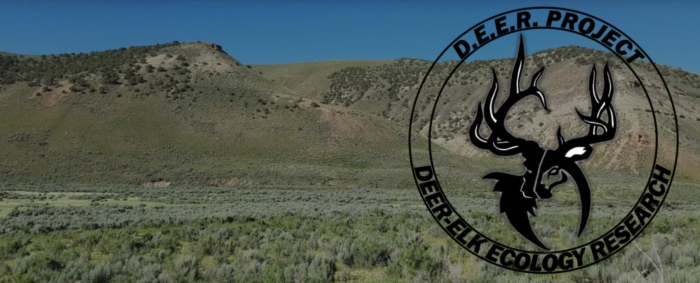
D.E.E.R. Project
By Matthew Hayes
Mule deer have a complex history throughout the western United States. In the days of the early settlers and pioneers, mule deer were relatively scarce; many trappers and explorers reported only occasional sightings of mule deer whereas other big game species were regularly observed. At the beginning of the 20th century, mule deer populations had been drastically reduced in number due largely to overharvest, market hunting, and overgrazing. Protections were put in place in the early to mid-1900s, eventually leading to ideas such as the North American Model of Wildlife Conservation, which was followed by a dramatic increase in mule deer populations. Mule deer populations peaked between the 1940s to the early 1960s throughout the western US.
Fast forward a few decades to the present day. With a lens to examine population fluctuations over the past 40+ years, a clear pattern has emerged. Populations, at least in Wyoming, appear to go through cyclical periods of increase followed by sharp declines. In reviewing literature and historical documents, concerns about mule deer populations tend to follow huge decreases in populations and when they subsequently rise, research and management become less important. Another point that seems clear in Wyoming is that although we have this see-saw in population numbers, there is a general declining trend since at least the 1970s. On average, Wyoming has seen a roughly 20% reduction in mule deer populations.
The population swings, and general decline, of mule deer since the 1970s has been difficult to understand. A variety of factors have been proposed to explain these declines, including: overharvest, harsh winters, habitat, drought, predation, disease and burgeoning elk populations. Managers have long noted that many areas that mule deer inhabit face different pressures and that populations are likely being driven by a variety of factors. All factors are not influencing populations in each portion of their range. This complication has meant that gaining a more complete understanding of reasons for fluctuations or stagnant growth in population numbers has been elusive. Without a solid understanding of the why and how associated with population fluctuations, it is incredibly difficult for targeted management to be beneficial.
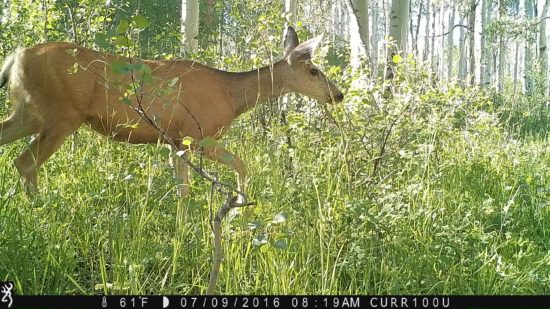
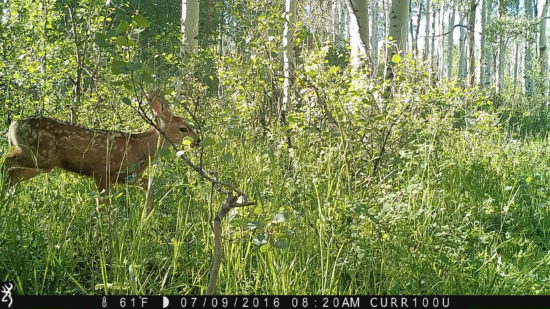
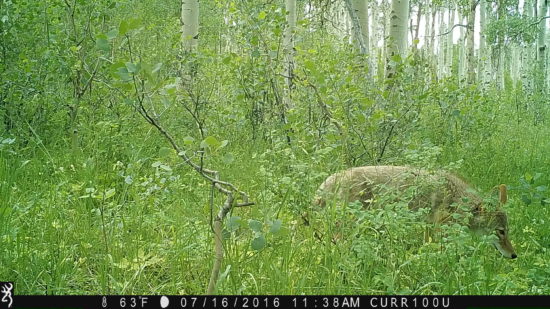
Researchers and managers have made great strides to better understand mule deer ecology and factors relating to their survival and reproduction. In the early 2000’s Global Positioning Systems (GPS) became small enough to fit onto a collar sized for ungulates. Since then, studies have been conducted examining migration and use of the landscape in summer and winter. The effects of drought and shifting precipitation regimes have been investigated as well as determining when, where and how animals are dying. Wyoming has been at the forefront of this research and has helped to better understand the ecology and management of mule deer. A key ecological process that has remained poorly understood are the interactions between mule deer and elk (though some work has been done at the Starkey Experimental Forest).

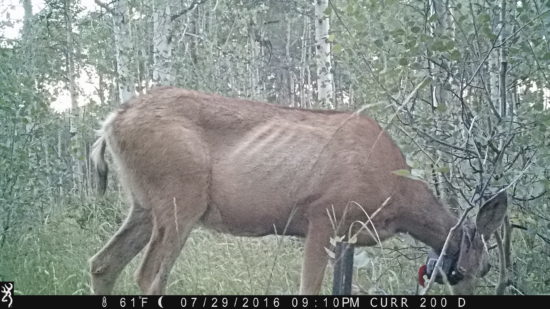
Mule Deer with GPS tracking collar.
Both mule deer and elk are highly cherished big game species. Wyoming and her residents rely on these animals for hunting, tourism and as a part of our cultural heritage. Nevertheless, at the same time those mule deer populations have generally declined, elk populations have increased dramatically across the same geographical range. Managers and researchers have long wondered if mule deer and elk could be competing for space and resources but, until recently, the ability to study these interactions was almost impossible. Potential for interactions between these 2, highly valued species to affect one another’s abundance has been a bit of a conundrum for decades, probably given the challenges associated with addressing such a complex question. The Deer-Elk Ecology Research Project (DEER) was ultimately incepted out the need to unravel the head-scratching complexities of poor performing mule deer populations, while a similar big game animal continues to grow in the same country.
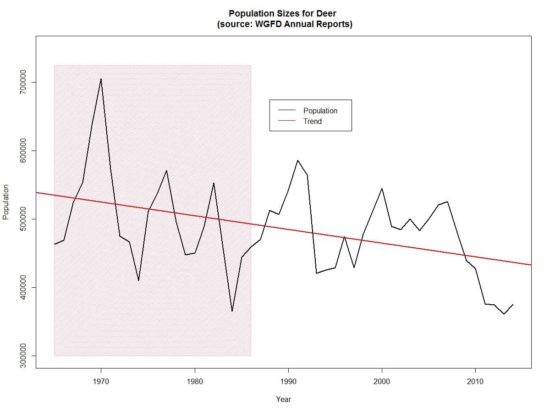
Population sizes for Deer

Population sizes for Elk
The DEER Project, located in the Greater Little Mountain Area of southwestern Wyoming, aims to increase our understanding of both mule deer and elk. This project is examining parturition timing and location of mule deer, mortality and recruitment of fawns, nutritional condition of adult female mule deer, summer diet overlap between elk and mule deer, space use, recruitment of male mule deer, survival, migration, and dispersal. We also are implicitly examining winter severity, habitat use, precipitation patterns, predation and disease. One of the greatest strengths of this work is the rigorous monitoring of both mule deer and elk in the same system. Many studies prior have examined one species or the other with inference to supposed interactions, but the DEER project will be able to analyze these interactions at a much finer scale. Another added benefit of this project is that it occurs in a high-desert system—an ecosystem ubiquitous throughout Wyoming but less studied compared to high-elevation systems. Far from being a one-off or unique system, the results from this work will be applicable to mule deer and elk throughout their shared range.


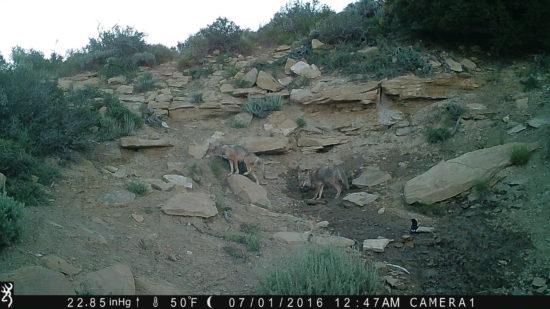
Future articles will focus on updates from the DEER project. You can follow along with the project, donate and subscribe for updates at www.deerproject.org.
The Western Association of Fish and Wildlife Agencies (WAFWA) has explored the issue of mule deer decline in depth and has published a very approachable book on the topic; you can check out the website at www.wafwa.org and navigate to the Mule Deer Working Group for more information.



FOR MORE INFORMATION: 
UNIVERSITY OF WYOMING
Kevin Monteith 307-766-2322 kevin.monteith@uwyo.edu
Matthew Hayes 307-766-5417 mhayes1@uwyo.edu

WYOMING GAME & FISH DEPARTMENT
Patrick Burke 307-875-3223 patrick.burke@wyo.gov
Mark Zornes 307-875-3223 mark.zornes@wyo.gov
Kevin Spence 307-875-3223 kevin.spence@wyo.gov
